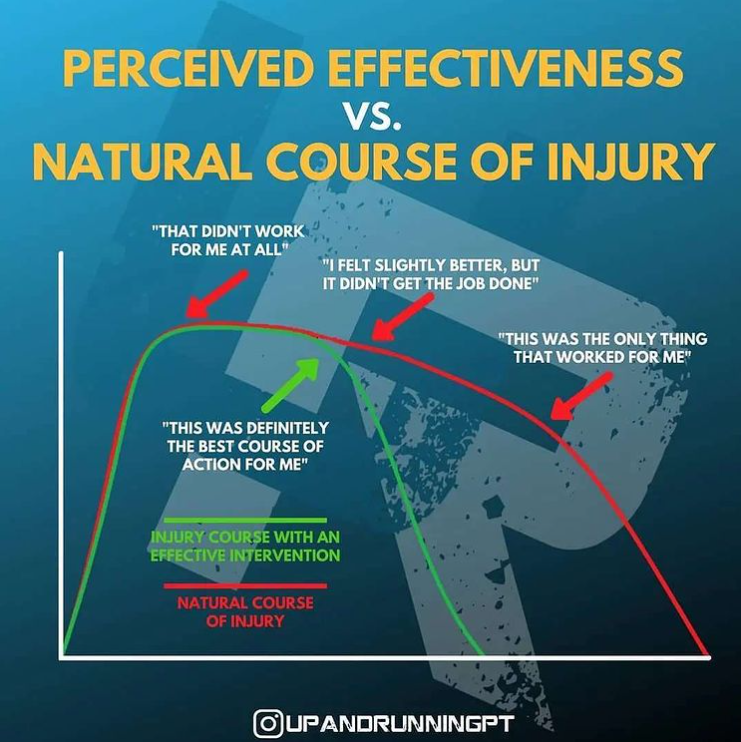In the realm of injury recovery, you’ve probably heard countless anecdotes like these:
- “My plantar fasciitis went away almost immediately after starting to supplement with [INSERT SUPPLEMENT].”
- “All I needed to do to get over my back pain was to start stretching regularly!”
- “Doing exercises didn’t help at all… But when I started getting [INSERT MODALITY], my pain went away.”
- “[INSERT PT] wasn’t helpful at all, but then I started seeing [INSERT PT] and they were able to get me better.”
These stories raise a perplexing question: How is it that people swear by certain approaches even when there’s no scientific evidence to support them? The answer lies in the complex interplay of factors affecting injury recovery, where individual experiences can vary significantly. Let’s explore the intriguing elements that influence the healing journey.
The Placebo Effect in Injury Recovery: Real and Powerful
First and foremost, we must acknowledge the existence and significance of the placebo effect. The mind’s remarkable ability to influence the body is well-documented, and the placebo effect can play a substantial role in perceived improvements. When we believe a treatment or intervention will work, our bodies can respond positively, providing relief from pain or discomfort.
The Natural Course of Pain and Injuries
Many injuries and pain conditions follow a “natural course.” Over time, the body’s inherent healing processes kick in, pain may desensitize, and we might inadvertently engage in activities that promote self-rehabilitation. This natural course can sometimes be mistaken for the effectiveness of a particular intervention.

Timing Matters
Effective interventions in injury recovery are often individualized to cater to the specific needs of the patient. Moreover, the timing of these interventions can be crucial. Different treatments may have varying degrees of effectiveness at different stages of an injury’s natural course. Thus, what seems ineffective at one point may become highly effective later on.
Seek Evidence-Based, Individualized Care
It is essential to rely on the guidance of healthcare professionals who can help discern the most evidenced-based and practical interventions for your unique situation. A one-size-fits-all approach is rarely effective in the realm of injury recovery. The key is to create a personalized plan that addresses your specific needs and stage of recovery.
Patience and Progress
It’s not uncommon for individuals to be seeking a particular form of progress that may not manifest until later in their recovery journey. In such cases, it’s easy to overlook the benefits of an earlier treatment approach. This underscores the importance of patience and trusting the process, as well as having a healthcare provider who can help manage expectations.
Athletes and Tissue Capacity
For athletes, preserving and rebuilding tissue capacity is of paramount importance. It’s crucial to understand that tissue capacity doesn’t magically return with time. Instead, it requires a structured and strategic approach, often under the guidance of a skilled physical therapist.
The Unpredictable Nature of Injuries
Lastly, not all injuries follow a predictable natural course. Some conditions are inherently complex and may require tailored interventions throughout the recovery process. Sometimes, people simply need someone in their corner, advocating for their unique needs.
Conclusion
In conclusion, the mystery of injury recovery can be unraveled by recognizing the influence of the placebo effect, the natural course of injuries, and the importance of individualized care. By owning your situation, seeking expert guidance, and trusting the process, you can navigate the unpredictable nature of injury recovery with confidence and resilience. Your journey to recovery may not be linear, but it can be successful with the right support and approach.
If you would like to explore references related to this topic, feel free to request them.

